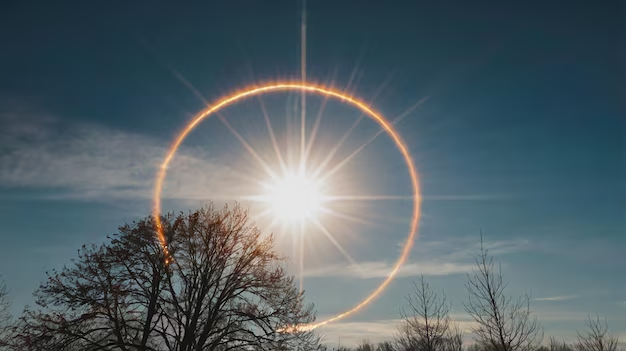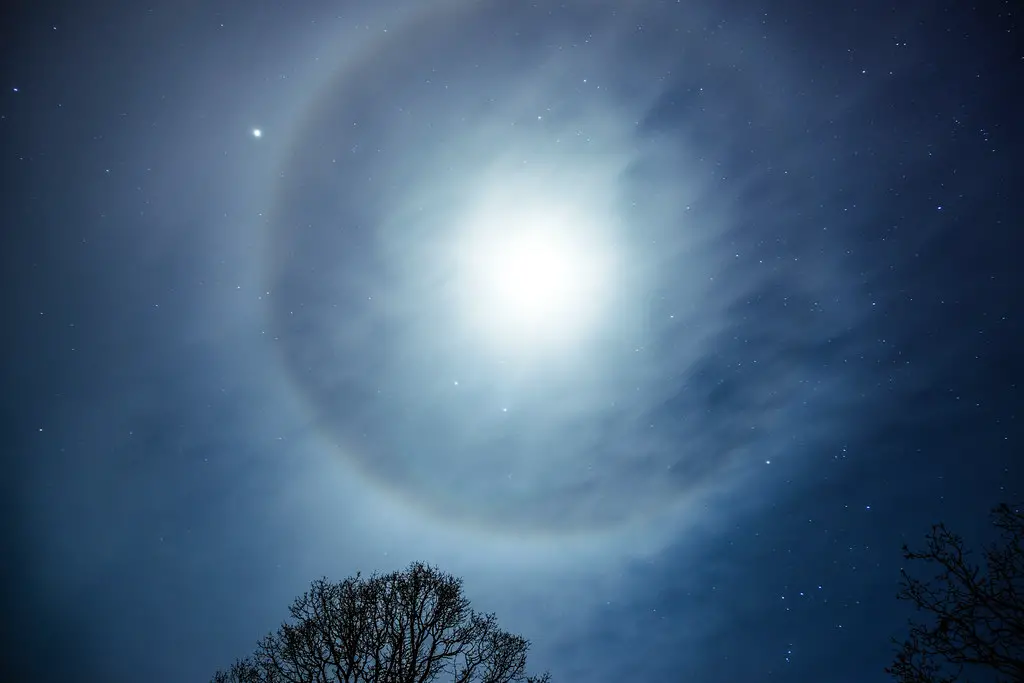On October 19, 2024, the night sky over Alaska was graced with a breathtaking astronomical event—the Aries Supermoon, accompanied by a stunning ice halo. This rare phenomenon captured the imagination of skywatchers and photographers alike, providing a mesmerizing display of nature’s beauty. In this blog, we’ll explore the significance of the supermoon, the science behind moon halos, and tips for experiencing these celestial wonders.

What is a Supermoon?
A supermoon occurs when a full moon coincides with the moon’s closest approach to Earth in its elliptical orbit, known as perigee. This results in a moon that appears larger and brighter than usual. The Aries Supermoon, specifically, refers to the full moon that occurs in the astrological sign of Aries. This celestial event not only offers a visual spectacle but also symbolizes new beginnings and assertiveness, resonating with the energetic traits associated with Aries.
The Science of Moon Halos
The stunning ice halo that encircled the Aries Supermoon is a captivating atmospheric phenomenon. Moon halos are created when the moonlight refracts through ice crystals present in the atmosphere, typically found in cirrus or cirrostratus clouds. These halos can appear as rings or arcs surrounding the moon, often with vibrant colors similar to those seen in rainbows.
The ice halo seen during the Aries Supermoon added an ethereal quality to the night sky, enchanting onlookers and providing photographers with a unique opportunity to capture the beauty of this natural wonder.

Viewing Tips for Future Celestial Events
If you missed the Aries Supermoon, don’t worry! Here are some tips for observing future lunar events and celestial phenomena:
- Choose the Right Location: Find a dark area away from city lights for the best view. Parks, rural areas, and elevated locations often provide ideal vantage points.
- Check the Weather: Clear skies are essential for moon viewing. Use weather apps or websites to monitor cloud cover and visibility.
- Be Prepared: Bring a camera or binoculars to enhance your experience. A tripod can help stabilize your shots for clearer photographs.
- Time It Right: Moonrise and moonset can create stunning visual opportunities. Arrive early to set up and enjoy the changing colors of the sky.
Conclusion
The Aries Supermoon on October 19, 2024, accompanied by a beautiful ice halo, was a remarkable event that showcased the wonders of the universe. These celestial occurrences remind us of the beauty that surrounds us and the intricate connections between the cosmos and our everyday lives.
As we look forward to future lunar events, let’s continue to embrace the awe and inspiration that comes with gazing at the night sky.
Whether you’re an avid astronomer or a casual stargazer, don’t miss the chance to witness these spectacular events and capture the magic of the cosmos.



